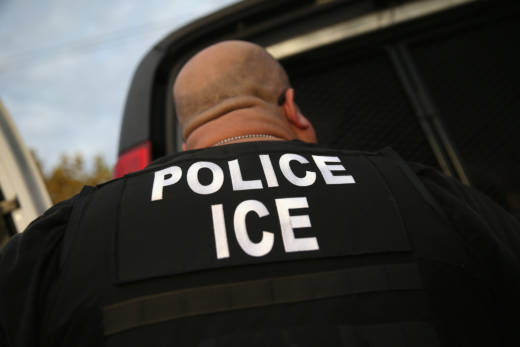An ICE official confirmed to a staffer with U.S. Rep. Zoe Lofgren (D-San Jose) on Friday that an enforcement action would take place, said Yianni Varonis, a spokesman for Lofgren’s office.
But an ICE spokesman declined to say whether the agency would begin conducting large-scale arrests in California, or if those arrests would mostly target people with deportation orders. In a statement, he said ICE agents will continue “targeted enforcement operations” for those “who are in violation of federal immigration law.”
“This is about addressing the border crisis by upholding the rule of law and maintaining the integrity of the immigration system,” he said.
Trump has threatened mass deportations before, including during his first presidential campaign. After Trump’s election in 2016, San Francisco, Alameda, Santa Clara and other counties ramped up their budgets to expand legal representation for immigrants who can’t afford an attorney.
San Francisco spent $8.4 million this year in legal aid, education and rapid response services for immigrants, according to Mayor London Breed’s office. Another $1 million funds the immigration defense unit at the San Francisco Public Defender’s Office, which was formed in 2017.
The eight immigration attorneys now working at the public defender’s office mostly represent clients detained by ICE who are fighting deportation in San Francisco’s immigration court, regardless of whether they live in the city or not, said Francisco Ugarte, who manages the immigration unit.
“We’ve been successful in helping those clients get released from custody about 50% of the time,” he said.
Many of the unauthorized immigrants fighting deportation have deep ties to the Bay Area, Ugarte said: “Most of our clients have been in the United States for more than 10 years. Most have U.S. citizen relatives, whether it’s a spouse or a child.”
In the event of large ICE arrests in the coming days, Ugarte said his office is prepared to jump in to represent “as many people as we can.”
“That’s what we were designed to do,” he said. “We will not stand by idly if there is a raid in our community.”
But advocates in other parts of California can’t count on as many immigration attorneys standing by.
“Because we don’t have a lot of resources in terms of money to pay for everything, we do rely a lot on volunteers,” said Jennaya Dunlap, who coordinates the Inland Empire Emergency Response Network.
Dunlap is the network’s only paid staff member and oversees more than 60 volunteers who follow ICE arrests and help support the families of people taken into custody in two of the largest counties in the state: San Bernardino and Riverside.
Due to the Inland Empire’s proximity to the border, both ICE and the Border Patrol are targeting and arresting people in the region, she said.
“A lot of calls come super early in the morning,” said Dunlap. “We do have people being picked up in our community every single day. So it’s an ongoing need.”
To beef up legal services for immigrants across California, the state Legislature has proposed $65 million in the budget now awaiting Gov. Gavin Newsom’s signature. That’s about double what the state spent before Trump was elected in 2016, according to the California Department of Social Services, which distributes the funds to nonprofit groups.
ICE conducted nearly 159,000 arrests nationwide in 2018, up from 110,000 two years before, according to agency figures. Still, there were more than 300,000 arrests annually during the Obama administration’s peak ICE enforcement years in 2010 and 2011 — about twice the 2018 levels.
Sanctuary policies, limiting cooperation between local law enforcement and federal immigration agents, have curbed the Trump administration’s efforts to ramp up deportations, according to researchers at the Migration Policy Institute in Washington, D.C.
ICE officials do not typically publicize arrests ahead of time to avoid tipping off targeted immigrants.

